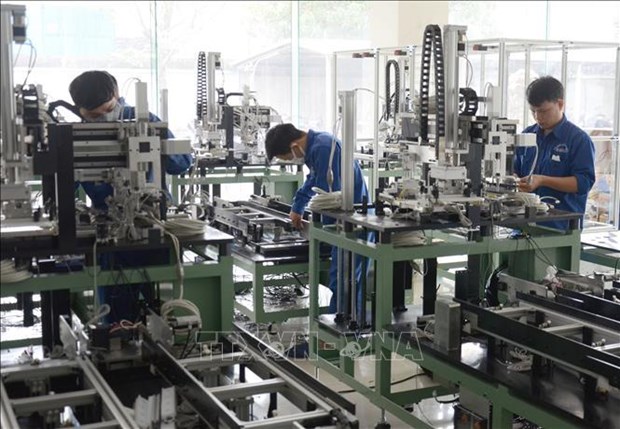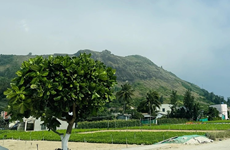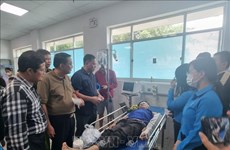New development space for Da Nang
 A corner of the central city of Da Nang. (Photo: VNA)
A corner of the central city of Da Nang. (Photo: VNA)Da Nang (VNA) – Seeing the significance of the master plan of Da Nang for the 2021-2030 period with a vision to 2050, the central city’s authorities have been starting work to implement the plan effectively.
According to Vice Chairman of the municipal People’s Committee Le Quang Nam, local authorities identified programmes and projects to prioritise investment in all socio-economic fields.
Regarding transportation, the city will focus on key projects such as Lien Chieu port project, Da Nang International Airport, the allocation of Da Nang Railway Station, and a study on the public transport project like high-speed subway or urban light rail.
In addition, the city will prioritise projects on free trade zones, non-tariff zones and accompanying services, on Da Nang international exhibition centre, shopping centres and those to improve infrastructure, landscape or create architectural highlights along Han river and night service areas.
In the coming time, Da Nang will also develop a complex of trade and urban eco areas in Hoa Khanh Nam, An Don, a complex of commercial, service areas and residential buildings serving international firework festival, and a complex of sports, entertainment, commercial areas and creative space project in Hoa Xuan ward.
In the field of digital economy and information technology (IT), Da Nang city will prioritise the development of a high-tech data services research and development centre - HTC Digital Park, and the DanangBay IT Park. It will also prioritise projects on the production of chips, biosensors, and integrated circuit (IC), projects on aviation, space technology, design technology, robot manufacturing, and mechanical manufacturing for the oil and gas, and wind power sectors.
At the same time, it will invest and attract investment in urban development projects, construction of resettlement areas, apartments, commercial housing, and social housing. Da Nang will also pilot urban reconstruction projects, forming urban areas in Binh Hien ward (district Hai Chau), Thanh Khe Dong ward (Thanh Khe district), and An Hai Tay ward (Son Tra district).
 Da Nang prioritise projects on the production of chips, biosensors, and integrated circuit (IC), projects on aviation, space technology, design technology, robot manufacturing, and mechanical manufacturing. (Photo: VNA)
Da Nang prioritise projects on the production of chips, biosensors, and integrated circuit (IC), projects on aviation, space technology, design technology, robot manufacturing, and mechanical manufacturing. (Photo: VNA)Secretary of the Da Nang Party Committee Nguyen Van Quang said that the master plan is a step to formalise policies to develop the city following the Poliburo’s Resolution No. 43-NQ/TW.
Speaking at the ceremony to announce the master plan in November 2023, Deputy Prime Minister Tran Hong Ha directed the city to develop a roadmap for implementation and identify key content, progress and resources for implementing planned programmes and projects.
The city should speed up administration reform and e-Government in building a ‘smart’ urban area with ‘green’ growth, circular economy and digital economy, he said.
The Deputy PM urged Da Nang to issue ‘green’ standards for luring renewable energy and hi-tech investment, building economic links with neighbouring provinces and cities in the region.
Da Nang will be focusing on human resources education and technology applications for semiconductor manufacture and processing industries in building a liveable city and a destination worthy of investment and sustainable development in the region, he urged.
The city should continue monitoring biodiversity protection and the ecological system in dealing with climate change and high sea levels, he added.
According to the master plan, Da Nang targets to achieve an economic growth rate of 9.5-10% a year by 2023, eyeing 12%, and Gross Regional Domestic Product (GRDP) per capita of about 8,000 - 8,500 USD.
The city aims to have the number of visitors increased by 17.5 - 18% a year and revenue of accommodation, food, and travel increased by 12.5 - 13% a year.
State budget revenue in the city is expected to increase by an average of 9 - 11% a year, while total investment capital for social development by 11 - 12% yearly./.











